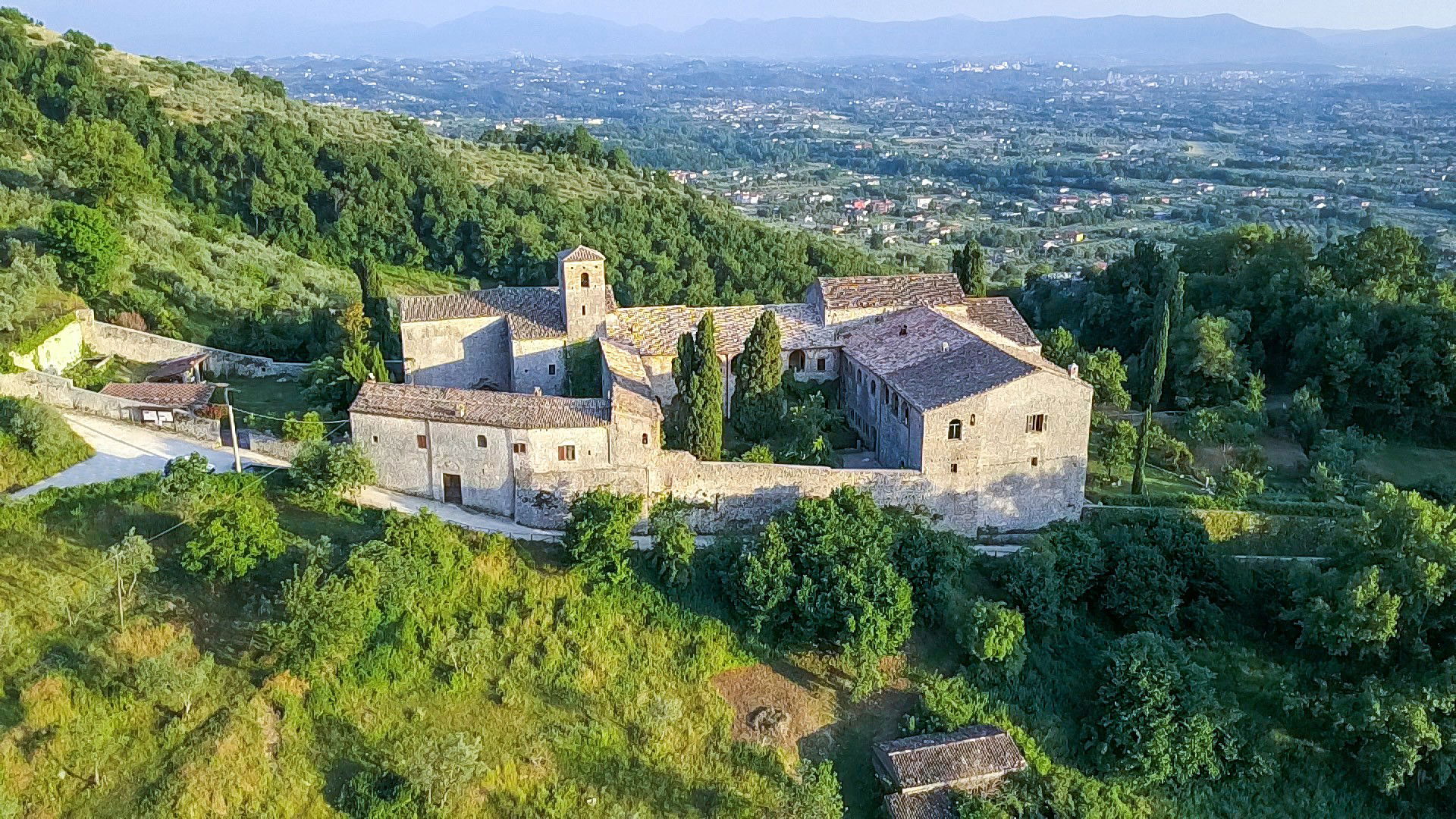ART AND CULTURE
CASTLE OF FUMONE
The history of the Fumone castle has obscure and very ancient origins. From the beginning Fumone was an important lookout and place of communication. The height of 800 meters where Fumone is located is located in a position of extraordinary strategic importance, a geographical position dominating the entire Sacco valley and the main road that connected Rome and Naples: the Via Latina. The name of Fumone comes from the ancient function of communication carried out with smoke signals, signals that announced the invasions of enemies coming from the south and directed to Rome. Belonging to the Ernici (very ancient population, residing in the upper Ciociaria in the cities of Anagni, Alatri, Ferentino and Veroli), Fumone is reported as a place of refuge for King Tarquinio the Superb expelled from Rome and in search of alliances. Later Fumone was of military importance for the Romans in the war of the Sannio, when the Samnites were positioned near Sora (area visible from the castle) and for a long time kept the legions in check.



CERTOSA TRISULTI
The Certosa di Trisulti is one of the most beautiful monasteries in central Italy, located about 800 meters above sea level. Built in 1204 at the behest of Pope Innocent III, who loved this place so solitary and ideal for prayer, it welcomed the Carthusians until 1947 when the Cistercians took over, who still welcome visitors today among silent cloisters and ancient pharmacy laboratories. and herbal medicine. Renovated in the seventeenth century, the visitor is amazed by the beauty of its church dedicated to St. Bartholomew and the pharmacy, or rather spice shop, giving the feeling of being back in time and being able to meet, at any moment, one of the monks from the white dress.
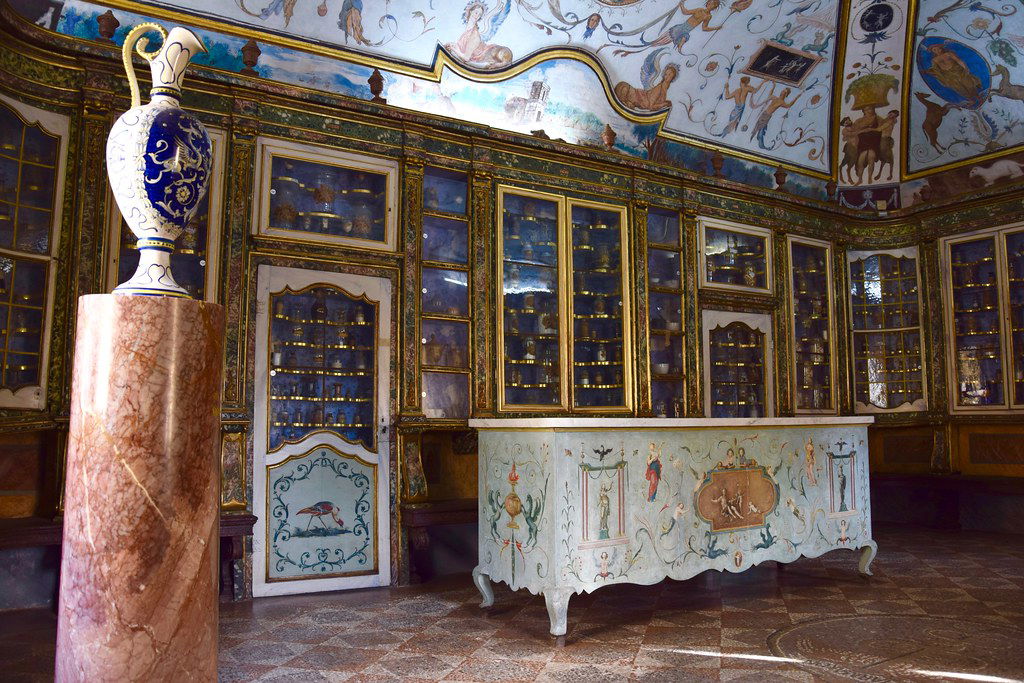

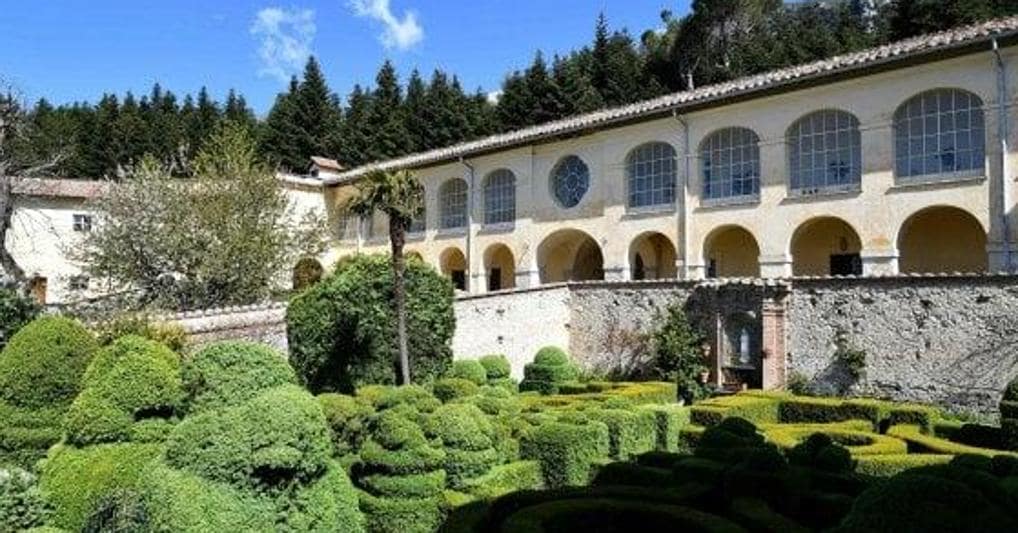
MUSEUM OF THEATER COSTUMES
The Serrone "Permanent Exhibition of Theatrical Costumes" is the only exhibition of this kind in the Lazio Region and one of the few in Italy. The theatrical costumes were created by Beatrice Minori, seamstress of RAI TV and personal dressmaker of Eduardo de Filippo, as well as collaborator of important Italian directors. During his brilliant career, numerous are the shows that have made use of his strong creative skills, among which we remember: Masaniello, Filumena Marturano, Forza come gente, Notre Dame de Paris ... Born in Serrone in 1923, Beatrice Minori he wanted to donate to his country the stage costumes, all original and worn by illustrious celebrities such as Eduardo, Gassman, Beppe Barra etc. Thanks to this precious contribution, it was possible to create the permanent exhibition of theatrical costumes "The costume, the actor, the character" in Serrone. What is striking is the care and skill with which the costumes are arranged, appropriately commented, and the quality of the fabrics. It seems that you can touch the history of Italian theater and the actors who represented it. From Machiavelli to Pirandello, passing through Goldoni and Shakespeare, the forms imagined between the lines by these great writers grappling with their most famous works take shape in the exhibition. The exhibition was arranged in two exhibition halls following a chronological criterion of style of the costumes.

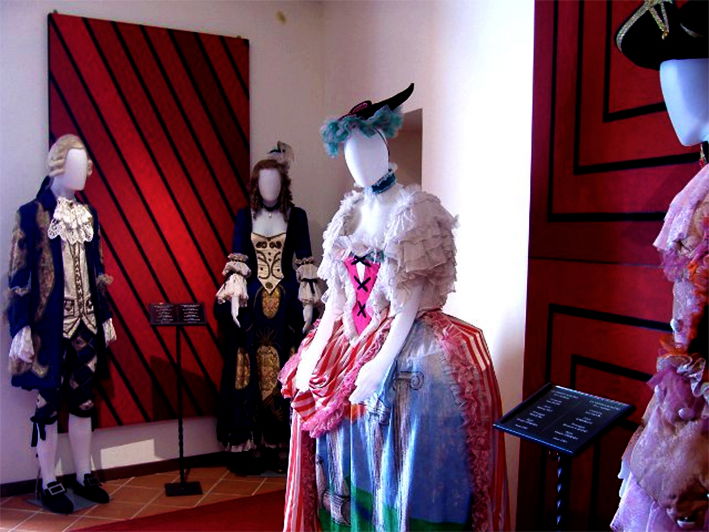
THE CYCLOPIC WALLS
The Acropolis of Alatri, a cyclopean construction from the pre-Roman era, represents, together with the city walls, the oldest and most celebrated monument in the city. Its daring containment structure, characterized by mighty polygonal walls, huge stones laid without the use of mortar, encloses a large raised area (19,000 square meters) located in the center of the town. Built to belong to the sky for the design and for which the Ancient Builders wanted to make an "Invocation of Belonging" to the Constellations, to which they recognized the value of a "Divine Paternity" (Source: G. Capone Storico). Due to the dominant position and the absolute inaccessibility of the place, the Acropolis has played since its origins the dual function of Sacred Space and defensive garrison, alternatively becoming the seat of ancient religious rites and the last refuge of the underlying population. The megalithic walls are also called "Cyclopean" due to their majesty and features ... legend has it that the Cyclops built them
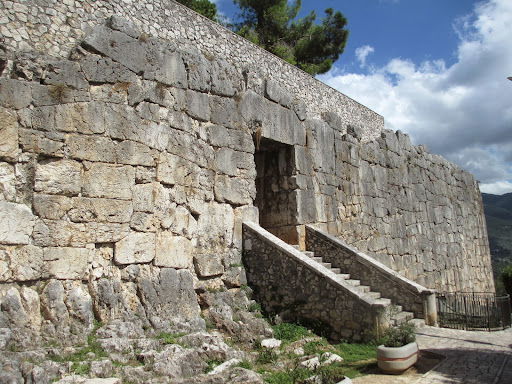
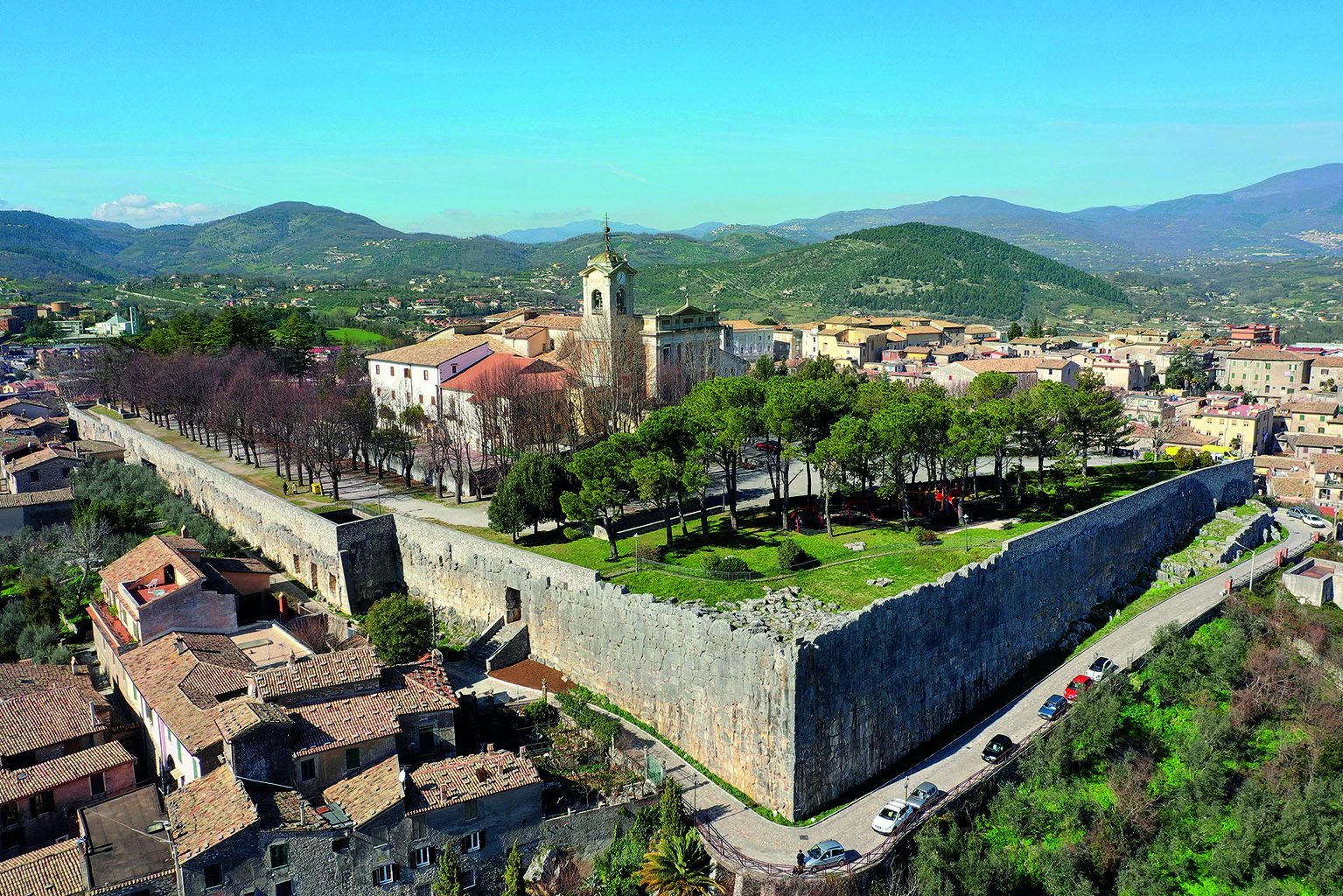
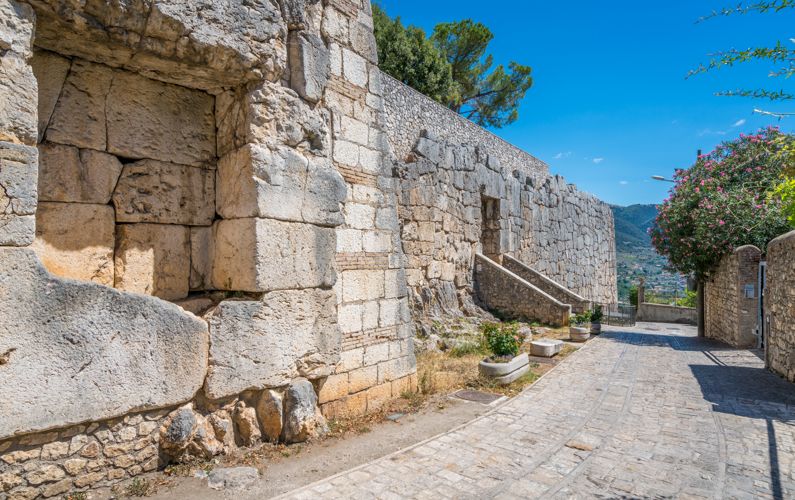
FIUGGI THEATER
The historic Municipal Theater is located on the town hall square and is part of the grandiose Grand Hotel complex with halls for dancing, congresses and exhibitions, formerly used as Cafè Chantant and casino for gaming. It was the most modern one could conceive of at that time, a real "fin du siecle" favor. Built in fine Art Nouveau style on a project by the architect Giovan Battista Giovenale and the builder Ing. Celestino Carlini, it was inaugurated in 1910. The management was entrusted to one of the most famous entrepreneurs in the tourism - hotel - theatrical field, Peppino Girani, under whose direction the theater reached its maximum splendor with famous artists who considered being able to tread the scenes of the Teatro Grand Hotel a title of coveted achievement. other events.

THEOPHILACT CASTLE
Ancient is the origin of the building, built in Roman times as a strategic fortified tower. The chronicles of the time narrate that, when San Benedetto in 529 undertook the historic journey to Montecassino to found his order, he passed through today's Anticolana valley and into "castrum Turris pervenit." Between 900 and 1100 the castle belonged to the powerful family Roman of Senator Teofilatto, who, with Pope Giovanni XII and the Counts of Tusculum, had large interests throughout the territory. After various events, the Castle at the end of the 13th century became a fief of the Caetani family. The purchase was desired and sanctioned by Pope Caetani Boniface VIII with the bull "Circumspecta Sedis" of 10 February 1303. Boniface VIII, who announced the first Jubilee in history in 1300, used the Castle as a place for meditation and work. From there he issued the papal bulls bearing the "Datum in Turri nostra prope in Anagnium." Over the following centuries the Caetani enlarged and fortified the Castle, providing for the construction of perimeter walls, moats, drawbridges and various defense towers Damaged by the earthquake of 1915, it was later restored by the Teofilatto family, the current owner Since 1987 it has been the seat of the "Domus Theophylacti Opus", a center of medieval studies and culture.
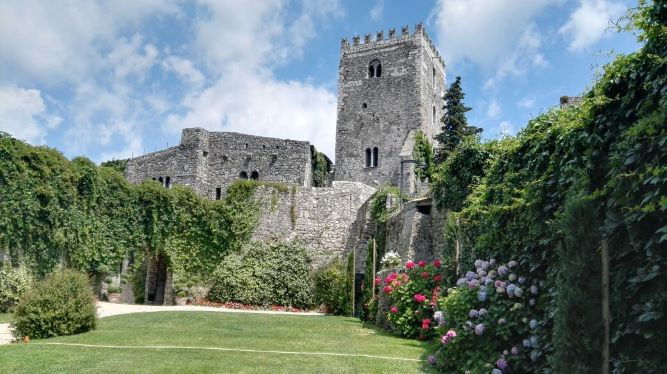
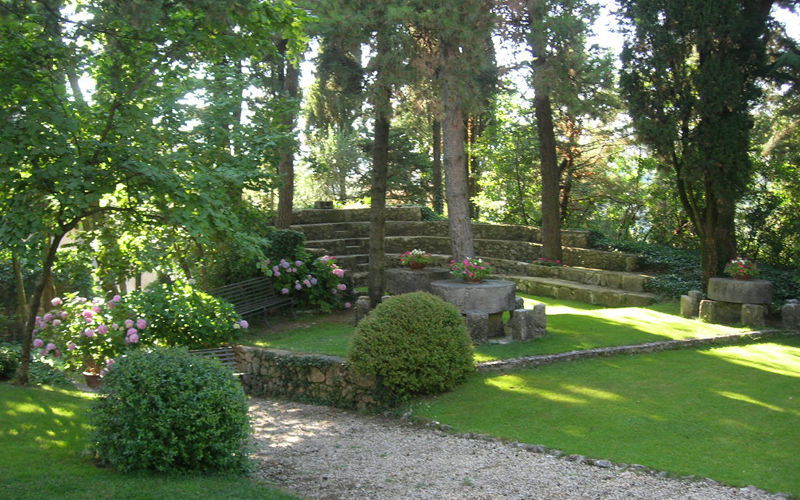
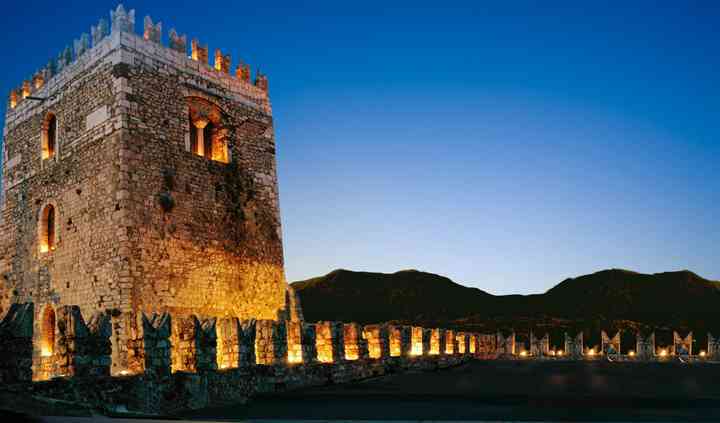
SANDRO MASSIMINI MUSEUM
BADIA DI SAN SEBASTIANO
The Badia di San Sebastiano is located east of Alatri and is located in a saddle of Monte Pizzuto on the ancient road to Veroli. The whole building is currently occupied by several private individuals. The first news comes from San Gregorio Magno who talks about the life of San Benedetto. Its history begins between the end of the fifth and the beginning of the sixth century. of the vulgar era when the Prefect of Gaul, Liberius, donated what was one of his villa in the territory of Alatri, to the monk Servando, head of a community of monks. Gregory the Great was interested in it because, still alive San Servando, the Badia welcomed San Benedetto who stopped here on his journey from Subiaco to Montecassino. A section of the wall remains from this period, part of the cellars and a very important discovery made during the exploration work conducted by the archaeologist Lisa Fentres, a 6th century tomb
